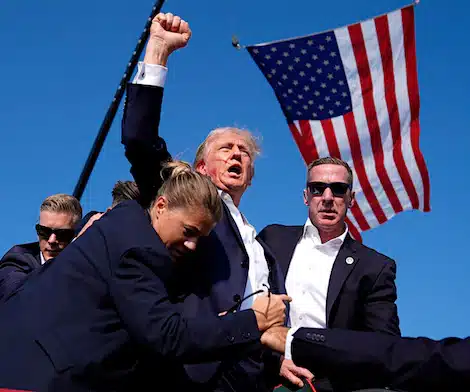The special agent in charge (SAIC) of the Pittsburgh field office wrote in a planning document there was “no adverse intelligence” on the threat against former President Donald Trump’s life at the July 13 rally, despite a lead agent saying she forwarded the information, the New York Post reported.
The lead agent told the Senate investigators she had notified the Pittsburgh SAIC about the “credible intelligence” before the rally, but he claims that never happened.
She said she asked her supervisor to call the Pittsburgh field office SAIC to discuss the intelligence, but he refused, saying there was “credible intelligence that he could not speak about.”
“It was information that he wasn’t able to pass,” she said, when asked why the second supervisor could not call into Pittsburgh.
“He did not use the word ‘classified’ on the phone, but from my general knowledge when you say that you cannot pass something on the phone, the understanding is that it’s classified and he can’t speak about it on the phone,” she said.
She informed the Pittsburgh SAIC about the counter-snipers that had been assigned “because the second supervisor expressed that there was credible intelligence.”
The Pittsburgh SAIC disputed the conversation, and said he became aware the counter snipers were coming to Butler “through an e-mail requesting housing for them,” the report said.
The SAIC told investigators had he known about the threat to Trump, the Butler Farm Show Grounds rally could have been moved indoors.
The revelations come from a Senate report released Wednesday outlining the multiple Secret Service failures against the “credible” threat against Trump before the rally in Butler, Pennsylvania. Would-be assassin Thomas Matthew Crooks was permitted to score a head shot on Trump.
The Senate Homeland Security and Governmental Affairs Committee and Permanent Subcommittee on Investigations, in its 94-page report, concluded the shootings were “foreseeable” and “preventable” and the result of “failures in planning, communications, security, and allocation of resources” by the Secret Service.
“These included unclear roles and responsibilities, insufficient coordination with state and local law enforcement, the lack of effective communications, and inoperable [Counter Unmanned Aircraft Systems systems], among many others,” according to the report.
Trump was shot in the ear when Crooks, 20, opened fire from a nearby rooftop. Rallygoer Corey Comperatore, 50, was killed, and rally attendees David Dutch, 57, and James Copenhaver, 74, were critically injured.
Crooks was shot and killed by a Secret Service countersniper. The report said the snipers had him in their sights “mere seconds” before he opened fire, but video showed the snipers were trained on the shooter’s location far longer than seconds.
The countersniper deployment was the first time a countersniper team was assigned to cover an event for anyone other than a president, vice president, or campaign nominee. Trump was set to be formally nominated that Monday at the Republican National Convention.
The Secret Service’s assistant director of the office of Protective Operations said the agency had determined the countersnipers would be at all of Trump’s outdoor events “prior to July 5.”
“The USSS Assistant Director for OPO said this decision was based on several factors including the size and scale of the former President’s outdoor events, his being on the cusp of becoming the nominee, and threat information, at least some of which is classified,” according to the report.
The panel further interviewed a countersniper who said that agents did not think to notify anyone to remove Trump from the stage, even though officers were seen with guns drawn running toward the building where Crooks was perched on a roof.
The FBI said it had no information about Crooks before he opened fire at the rally.
The report also indicated at least eight Secret Service agents were made aware of a “suspicious” person nearly a half hour before the shooting, that key requests to FBI, DHS, ATF and [Secret Service] remain outstanding, and that the documents that the committee got were heavily redacted, hiding its ability to investigate.
Investigators found there was no clear chain of command among the Secret Service and other security agencies and no plan for coverage of the building where the shooter climbed up to fire the shots. Officials were operating on multiple, separate radio channels, leading to missed communications, and an inexperienced drone operator was stuck on a helpline after his equipment was not working correctly.









